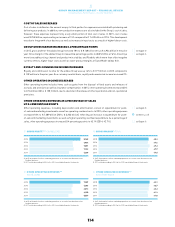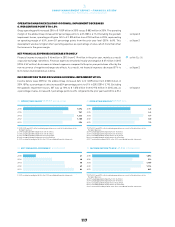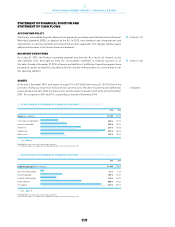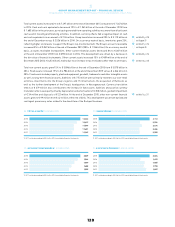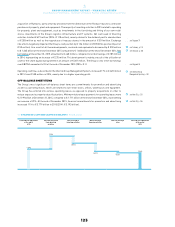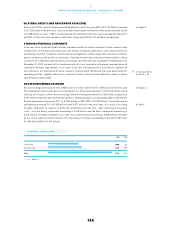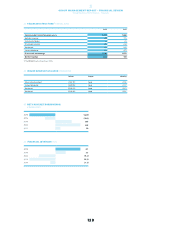Reebok 2015 Annual Report Download - page 128
Download and view the complete annual report
Please find page 128 of the 2015 Reebok annual report below. You can navigate through the pages in the report by either clicking on the pages listed below, or by using the keyword search tool below to find specific information within the annual report.
124
3
GROUP MANAGEMENT REPORT – FINANCIAL REVIEW
Group Business Performance – Treasury
TREASURY
GROUP FINANCING POLICY
In order to be able to meet the Group’s payment commitments at all times, the major goal of our financing
policy is to ensure sufficient liquidity reserves, while at the same time minimising the Group’s financial
expenses. The operating activities of our Group segments and the resulting cash inflows represent the
Group’s main source of liquidity. Liquidity is planned on a rolling monthly basis under a multi-year financial
and liquidity plan. This comprises all consolidated Group companies. Our in-house bank concept takes
advantage of any surplus funds of individual Group companies to cover the financial requirements of
others, thus reducing external financing needs and optimising our net interest expenses. By settling
intercompany transactions via intercompany financial accounts, we are able to reduce external bank account
transactions and thus bank charges. Effective management of our currency exposure and interest rate
risks are additional goals and responsibilities of our Group Treasury department.
TREASURYSYSTEM AND RESPONSIBILITIES
Our Group’s Treasury Policy governs all treasury-related issues, including banking policy and approval of
bank relationships, financing arrangements and liquidity/asset management, currency and interest risk
management as well as the management of intercompany cash flows. Responsibilities are arranged in a
three-tiered approach:
•The Treasury Committee consists of members of the Executive Board and other senior executives who
decide on the Group’s Treasury Policy and provide strategic guidance for managing treasury-related
topics. Major changes to our Treasury Policy are subject to the prior approval of the Treasury Committee.
•The Group Treasury department is responsible for specific centralised treasury transactions and for
the global implementation of our Group’s Treasury Policy.
•
On a subsidiary level, where applicable and economically reasonable, local managing directors and
financial controllers are responsible for managing treasury matters in their respective subsidiaries.
Controlling functions on a Group level ensure that the transactions of the individual business units are
in compliance with the Group’s Treasury Policy.
CENTRALISEDTREASURY FUNCTION
In accordance with our Group’s Treasury Policy, all worldwide credit lines are directly or indirectly managed
by the Group Treasury department. Portions of those lines are allocated to the Group’s subsidiaries and
backed by adidas AG guarantees. As a result of this centralised liquidity management, the Group is well
positioned to allocate resources efficiently throughout the organisation. The Group’s debt is generally
unsecured and may include standard financial covenants, which are reviewed on a quarterly basis. We
maintain good relations with numerous partner banks, thereby avoiding a high dependency on any single
financial institution. Banking partners of the Group and our subsidiaries are required to have at least a
BBB+ long-term investment grade rating by Standard & Poor’s or an equivalent rating by another leading
rating agency. Only in exceptional cases are Group companies authorised to work with banks with a lower
rating. To ensure optimal allocation of the Group’s liquid financial resources, subsidiaries transfer excess
cash to the Group’s headquarters in all instances where it is legally and economically feasible. In this regard,
the standardisation and consolidation of the Group’s global cash management and payment processes,
including automated domestic and cross-border cash pools, is a key priority for Group Treasury.
see Risk and Opportunity
Report, p. 156
see Glossary, p. 260


